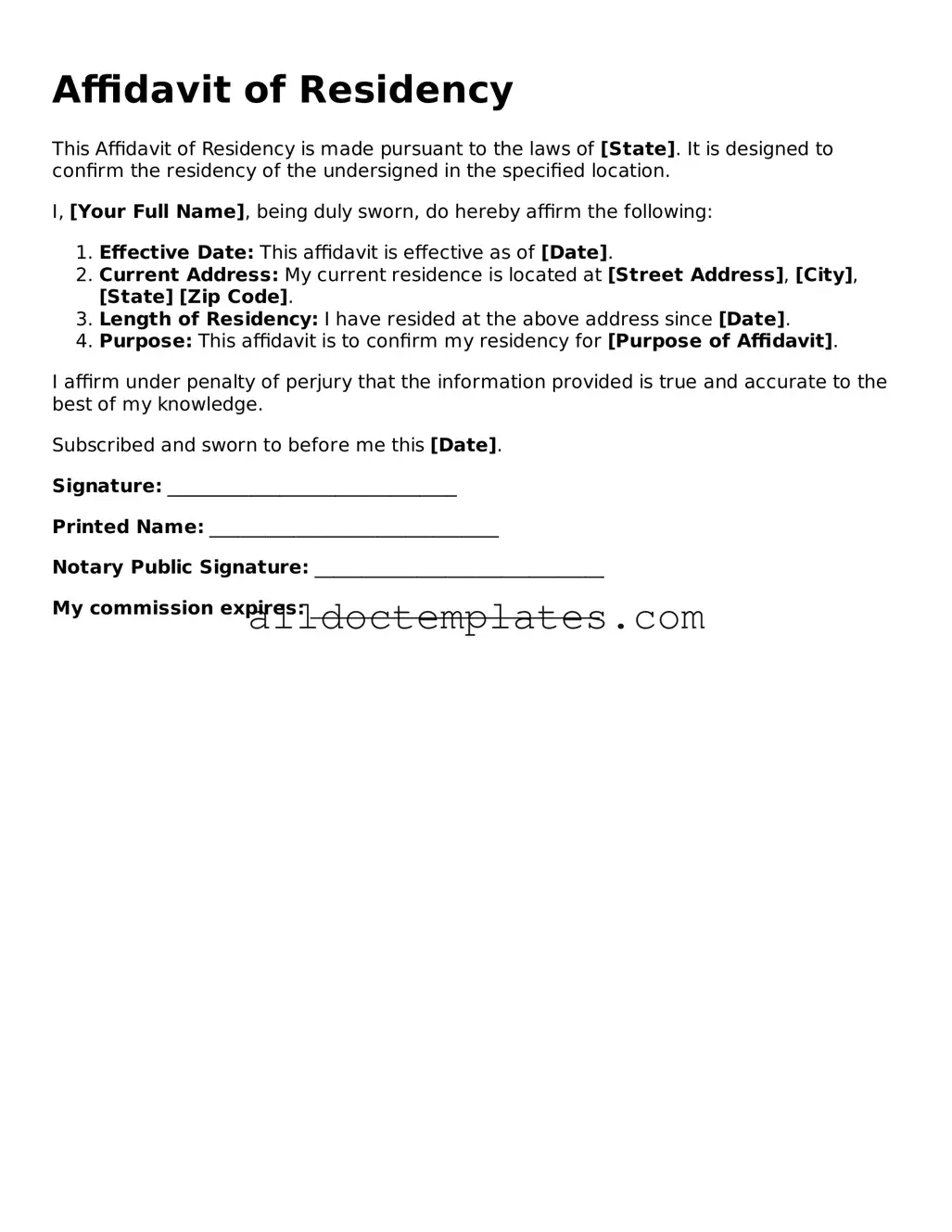Valid Affidavit of Residency Template
The Affidavit of Residency is a legal document used to confirm an individual's residence at a specific address. This form is often required for various purposes, such as enrolling children in school or applying for certain government benefits. By signing this affidavit, individuals assert their residency status under penalty of perjury, ensuring the accuracy of the information provided.
Get Your Form Now
